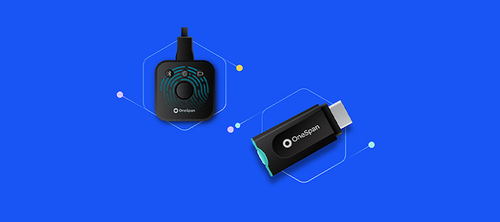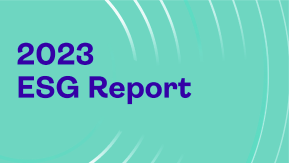Driving cost optimization through electronic contract signing

According to Foundry’s State of the CIO report 2023, cost control and expense management are top-of-mind for IT leaders this year. But it’s not just CIOs seeking efficiency savings: as costs continue to rise, this has become a key priority for all line-of-business decision-makers.
Across the globe, businesses are experiencing soaring inflation, rising interest rates, and increasing energy costs. These factors pressure businesses to adapt and continue to grow despite this period of turmoil and change.
Budgets are tightening. A key executive priority for 2023 and beyond is spending only what is necessary. There is greater scrutiny over technology spending, with increased importance on a clear understanding of the software's cost, utilization, and renewal price of what software is being paid for, how it is being used, and what price increases are expected at renewal time.
Due to high ROI when automating agreement processes and workflows, electronic contract signing or digital agreements is one area of tech spending where businesses continue to invest.
How digital agreements reduce costs
Before diving into how digital agreements help reduce costs, let’s look at what we mean by digital agreements and contract management processes. A digital agreement or electronic contract is drafted, negotiated, and executed online. Digital agreements are part of a larger ecosystem of processes and workflows.
Typically, these workflows and techniques are very manual and involve paper, ink, and stamps, as well as steps such as printing, scanning, faxing, and courier or postal mail. Digitizing and automating manual processes reduces costs and saves time.
Organizations often overlook these costs, but if you scale them across all agreements, they can easily reach hundreds of thousands and even millions of dollars, depending on the size of the enterprise. Agreements are the foundation of doing business, and they are everywhere, from back-office to front-office functions, regardless of business size and industry.

Not only do organizations significantly reduce costs by digitizing agreements and the processes around them, but they also increase efficiencies. For example, one of the world’s largest logistics companies deployed OneSpan Sign e-signatures in their HR departments across several countries to hire and onboard temporary workers.
By moving away from paper and manual signing, they save over $900,000 every year. They’ve also accelerated the hiring process by 85% – this is one use case in one department. Multiply it by the number of use cases across the organization, and the cost savings can be enormous.
E-signature is just the beginning
E-signature is typically a business's first step in digitizing agreement processes, but it is just the beginning. Beyond digitizing signatures, automating other processes, such as document storage, can reduce costs further.
These processes are still manual or semi-automated, costing businesses money, time, and resources. By digitizing agreements and related agreement processes, not only will organizations considerably reduce spending, but they will also achieve the following benefits:
- Better use of time and resources, freeing more time for strategic initiatives
- Transparency over agreements and enhanced compliance with digital audit trails and the ability to enforce business rules
- Improved experience for all stakeholders, including customers, employees, and partners
When done well, digitizing provides an opportunity to improve the user experience. It also allows for the collection of data metrics to further enhance the experience in the future while increasing security and reducing fraud.
Digital agreements with OneSpan
OneSpan provides a suite of solutions to help organizations digitize their agreement processes beyond e-signature. Most customers get started with OneSpan Sign, our electronic signature solution. This intuitive software offers a robust feature set and enhanced security, maximizing internal and external adoption and preventing wasted technology investments.
By switching to OneSpan Sign, several customers have seen a significant increase in online completion rates. One large insurance company saw completion rates increase by 23% in the first 30 days after switching from their previous e-signature solution to OneSpan Sign.
A unique pricing model to drive costs down further
Often, pricing models are punitive. Customers must guess how many transactions or envelopes they will consume monthly or yearly. If they consume fewer than anticipated, they lose out. Equally, if they consume more than predicted, they end up paying excessive overage charges. Customers will only know if they predict the exact number of transactions they will use. OneSpan offers a more flexible pricing model, helping customers drive business outcomes without overbuying and under consuming licenses and transactions, which eliminates the unpredictability typically associated with per-signature or per-envelope transaction pricing, delivering versatility while removing end-user licensing complexity.
OneSpan is the first in the industry to deliver a cloud-based digital agreements platform that achieves true economies of scale, passes on cost savings to customers, and provides the most favorable price-per-value offering compared to traditional e-signature solution providers.
Pricing and cost savings are among the top reasons organizations switch to OneSpan Sign. That’s why it is unsurprising that a large energy retailer saved 75% on costs when switching to OneSpan Sign from a traditional e-signature provider.
Beyond pricing, however, one of the reasons businesses choose OneSpan is the white-glove treatment we offer. Our goal is to work with our customers to ensure their success and, in doing so, foster a long-term partnership.
"One of the main factors why I decided to go with OneSpan was their willingness to work with us, the attention we received, and the ability for us to ask questions and get accurate and true responses that showed they understood what we were trying to do."
Ken Long
Head of technology for consumer sales
Additional ROI from e-signature and digital agreements
Using e-signatures and digital agreements enhances ROI, meeting modern consumer desires for swift and convenient transactions that elevate satisfaction levels. This digital transition cultivates better customer interactions, amplifies productivity, security, and ensures compliance. Such multifaceted benefits underline the imperative of integrating digital agreements in contemporary business frameworks.
Deliver a better customer experience
Customer expectations are changing. People want everything to be available quickly, at their convenience, in their preferred channel, and on their preferred device. Companies can improve customer satisfaction by delivering a fast, efficient experience. Higher NPS scores will follow. Creating easy, hassle-free digital experiences is key.
For example, when a captive auto finance company implemented e-signatures to automate the retail installment contract at their dealerships, they eliminated manual work such as opening envelopes and rekeying data. Because there is no longer any manual processing, dealers get same-day funding, and dealer satisfaction has since risen more than 50 percent.
Boost productivity
Increasingly, people are working from their smartphones, tablets, and other devices. Accessing e-signatures on mobile devices makes signing easier and more convenient than on desktops or laptops. Employees also find that mobile e-signing helps them get more done in less time.
Strengthen security and reduce risk
Digital audit trails play a crucial role in reducing risk related to compliance. They provide a comprehensive and transparent record of all activities and interactions within a digital process or system. By capturing and documenting each step of the process, including user actions and any changes made, digital audit trails enable organizations to demonstrate compliance with regulatory requirements.
In addition, implementing workflow and business rules to ensure that contracts can’t be submitted for processing if they are missing signatures or data improves efficiency and significantly reduces manual rework.
Finally, white-labeled e-signatures reduce vulnerability to phishing attacks by customizing branding and design throughout the digital workflow. A white-labeled contract signing workflow makes it harder for fraudsters to replicate official communications. Which adds an extra layer of security against phishing attempts and helps protect the security of sensitive information.
Streamline contract management with electronic signing and digitization
Implementing an e-signature solution is essential for optimizing costs and streamlining processes. Evaluate opportunities across your entire business rather than limiting it to a single use case or department. If you already utilize an e-signature solution, periodically reassess its alignment with your requirements and ensure you secure the best price.
By examining your current agreement framework, you might uncover significant saving opportunities. Embrace these steps and the path to unlocking greater efficiency and cost savings within your organization.







